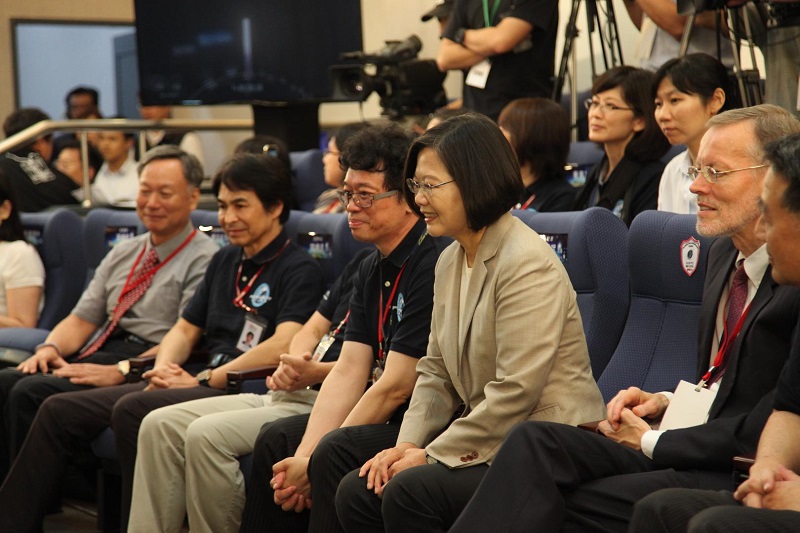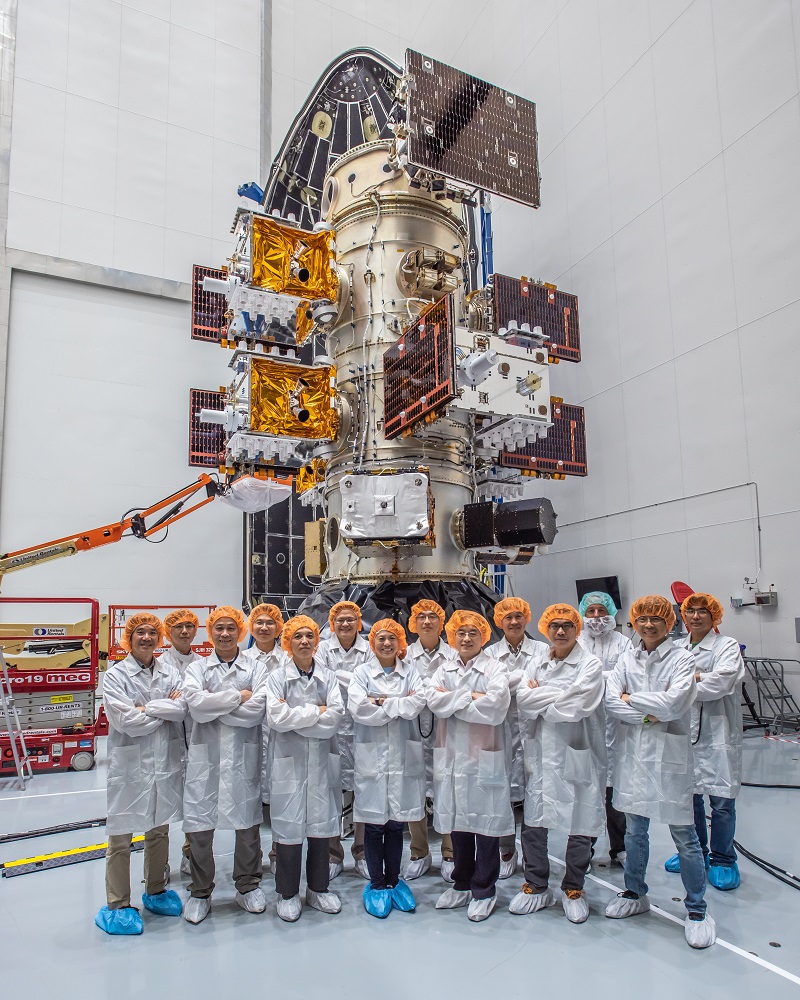“Five, four, three, two, one, zero, ignition, launch!" The Falcon Heavy rocket from US Space Exploration Technologies Corp. (SpaceX) carrying six FOR-MOSAT-7 satellites was successfully launched at the Kennedy Space Center (KSC) in the United States at 14:30 p.m. of June 24th, Taiwan time. President Tsai Ing-wen specially visited the satellite operations and control center of National Space Organization (NSPO), National Applied Research Laboratories (NARLabs) in Hsinchu. After the rocket was launched, NSPO of NARLabs in Taiwan and the KSC in the United States simultaneously cheered!
About 91 minutes after the rocket launch, the six satellites will begin to separate from the rocket, and they will be completely separated for about 16 minutes. These separated satellites will orbit the earth with the altitude of about 720 kilometers and at an inclination angle of 24 degrees. It is estimated that 165 minutes after the rocket launch, FORMOSAT-7 will be connected to the Darwin Overseas Ground Station in Australia for the first time; 378 minutes after the launch, it will be the first communication with the Taiwan Ground Stations in Zhongli and Tainan. However, the actual communication time is required to wait for the Falcon Heavy launch vehicle to return the state vector of the satellite and the rocket at the separation moment in order to calculate the simulated satellite position by the ground station.
FORMOSAT-7 satellites were launched at the KSC in Florida, USA. It has been more than 20 years since FORMOSAT-1 was launched at the same location on January 27, 1997. It has attracted about 300 overseas compatriots who are con-cerned about Taiwan’s space development together with Minister of Science and Technology Chen Liang-Gee, Ambassador to the United States Stanley Kao, President of NARLabs Wang Yeong-Her, Deputy Director General of NSPO of NARLabs Yu Shiann-Jeng, Managing Director of AIT/W John J. Norris Jr., Acting NOAA Administrator Neil Jacobs, SSTL Managing Director Sara Parker, and distinguished guests from NASA and SpaceX to watch this historic moment.
The domestic launch ceremony is held at NSPO of NARLabs in Hsinchu. Presi-dent Tsai Ing-wen personally visits the ceremony with Deputy Minister of MOST: Shieh Dar-Bin, Vice President of NARLabs: Wu Kuang-Chong, Director General of NSPO of NARLabs, Brent Christensen, Director of the Office of Taiwan Coordination of AIT, Lin Chun-Liang, Director General of NSPO, and distinguished guests, partners, and media reporters. There are around 200 people watching the moment through instant broadcast when the rocket is launched.
 FORMOSAT-7 Launch Ceremony at NSPO of NARLabs
FORMOSAT-7 Launch Ceremony at NSPO of NARLabsSix FORMOSAT-7 satellites form an advanced meteorological satellite constella-tion with the mission payload of a Tri-GNSS Radio-occultation System (TGRS) in each satellite. After the completion of orbital deployment for six satellites, it can pROVide about 4,000 data daily between +/- 50 degrees of the north and south latitudes, greatly increasing meteorological data in low latitude areas including Taiwan. Each FORMOSAT-7 satellite also carries two scientific payloads including Ion Velocity Meter (IVM) and Radio Frequency Beacon (RFB), which are used to conduct advanced space weather science experiments. The IVM measurement data can impROVe the accuracy of TGRS, and RFB can measure the ionospheric scintillation to obtain the distribution of the ionospheric anomaly zone.
FORMOSAT-7 will continue the occultation meteorological observation mission of FORMOSAT-3, and it is expected that all functional tests will be completed within one month after the launch, and then the satellite orbit will be adjusted. At this time, each satellite will be able to receive GNSS data from the US GPS and the Russian GLONASS satellites, and will begin to analyze data such as tempera-ture, pressure, humidity, and electron density over the Earth. The Taiwan-US sci-entific team will collaborate on the comparison and correction of the data. It is ex-pected that the FORMOSAT-7 measurement data will be available to the global meteorological community in the 7th month after the launch, but the distribution of observation data is not uniform; all six satellites will be deployed to a mission orbit of 550 km altitude in the 19th month after the launch, and will pROVide uniformly distributed occultation observation data at middle and low latitudes.
 FORMOSAT-7 team pose in front of the satellite
FORMOSAT-7 team pose in front of the satellite